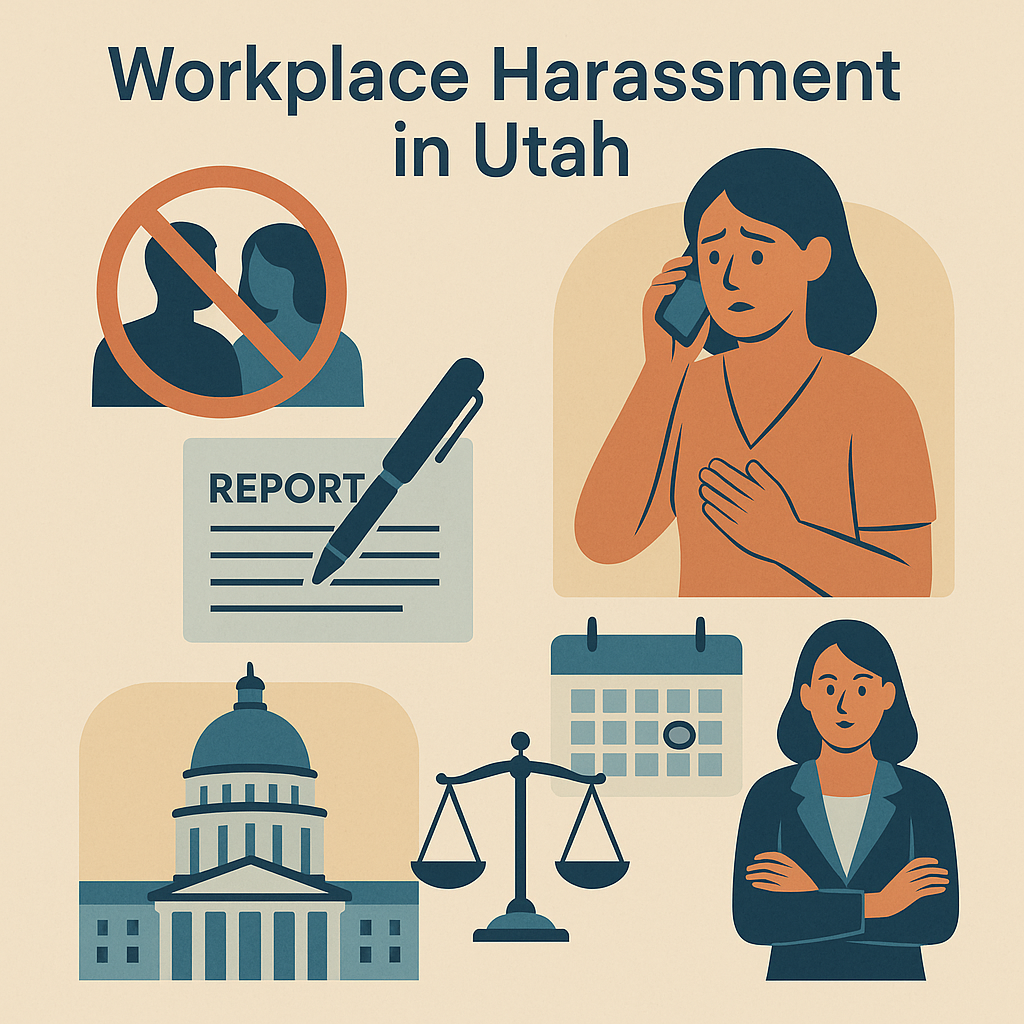Workplace Harassment in Utah What Employees Should Know
Plain-English guide to definitions, reporting, timelines (UALD/EEOC), anti-retaliation, and next steps
Utah Law Explained helps you cut through legal jargon so you can take the right next step. Workplace harassment is more than an uncomfortable situation – it is a legal issue with protections under state and federal law. This page explains what counts as illegal harassment, how to report it, how to protect yourself from retaliation, and which deadlines to watch.
Instead of guessing, use this step-by-step guide to understand definitions, reporting options, and common pitfalls, so you can apply the law in real life.
What Counts as Workplace Harassment
In Utah, harassment generally means unwelcome conduct based on a protected characteristic (like race, sex, religion, disability, age, or national origin) that creates a hostile, intimidating, or offensive work environment.
Protected Traits
Conduct tied to protected characteristics is what the law targets – not general rudeness or personality conflicts.
Severe or Pervasive
Behavior that is severe or frequent enough to affect your ability to work may be illegal.
Quid Pro Quo
When job benefits (promotions, hours, assignments) are conditioned on sexual favors or acceptance of harassment.
Legal Framework
Title VII (federal) and Utah’s Antidiscrimination Act apply. Courts look at pattern, frequency, and impact – not one offhand comment.
Report Internally
Most employers in Utah are required to have policies and reporting procedures for harassment. Your first step is usually to report the harassment internally to HR, a supervisor, or through a company hotline.
- Follow your employer’s handbook policies.
- Keep a copy of any complaints you file.
- If the harasser is your direct supervisor, report to another manager or HR.
Reporting internally matters because it gives the employer a chance to fix the problem. If they fail, that strengthens your legal claim later.
Document Everything
Your case is only as strong as your evidence. Document harassment in detail:
- Write down dates, times, places, and exact words or actions.
- Save emails, texts, or social media posts.
- Identify witnesses when possible.
UALD & EEOC Filing, Anti-Retaliation, Timelines
Where to File
Anti-Retaliation
Deadlines (Strict)
Case Study
Step-by-Step: Your Utah Harassment Claim
Report Internally
Follow policy; if your supervisor is the problem, go to HR or another manager. Keep copies of what you submit.
Document Everything
Dates, times, exact words/actions, witnesses; save emails, texts, DMs, and social posts.
File with UALD (Cross-File with EEOC)
UALD intake preserves state rights; cross-filing preserves federal rights and timelines.
Investigation/Mediation
Expect interviews, document requests, and possible mediation. Keep cooperating and updating your evidence log.
Right-to-Sue & Next Steps
If the agency process ends without resolution, you may receive a Notice of Right to Sue. Talk to an employment attorney promptly about deadlines.
Need Guidance on Your Situation?
Every workplace is different, and retaliation rules and deadlines are strict. A short consult can help you avoid missteps and protect your rights.
Talk to a Utah Employment AttorneyVideo & Social Learning Hub
YouTube Resources
Key Takeaways
Harassment must be tied to protected traits and be severe or pervasive – or involve quid pro quo.
Report internally and document thoroughly; then file with UALD (and cross-file with EEOC) within strict deadlines.
Retaliation for reporting is illegal. Document it and add it to your charge if it occurs.
This page is legal information, not legal advice. When in doubt, get counsel before you file.
Next Step
Ready to act? Start by reporting internally and organizing your documentation. If the behavior continues, prepare your UALD intake.
Book a Workplace-Rights ConsultWe will help you understand definitions, reporting, agency filing, retaliation, and how to protect your claim timelines.
